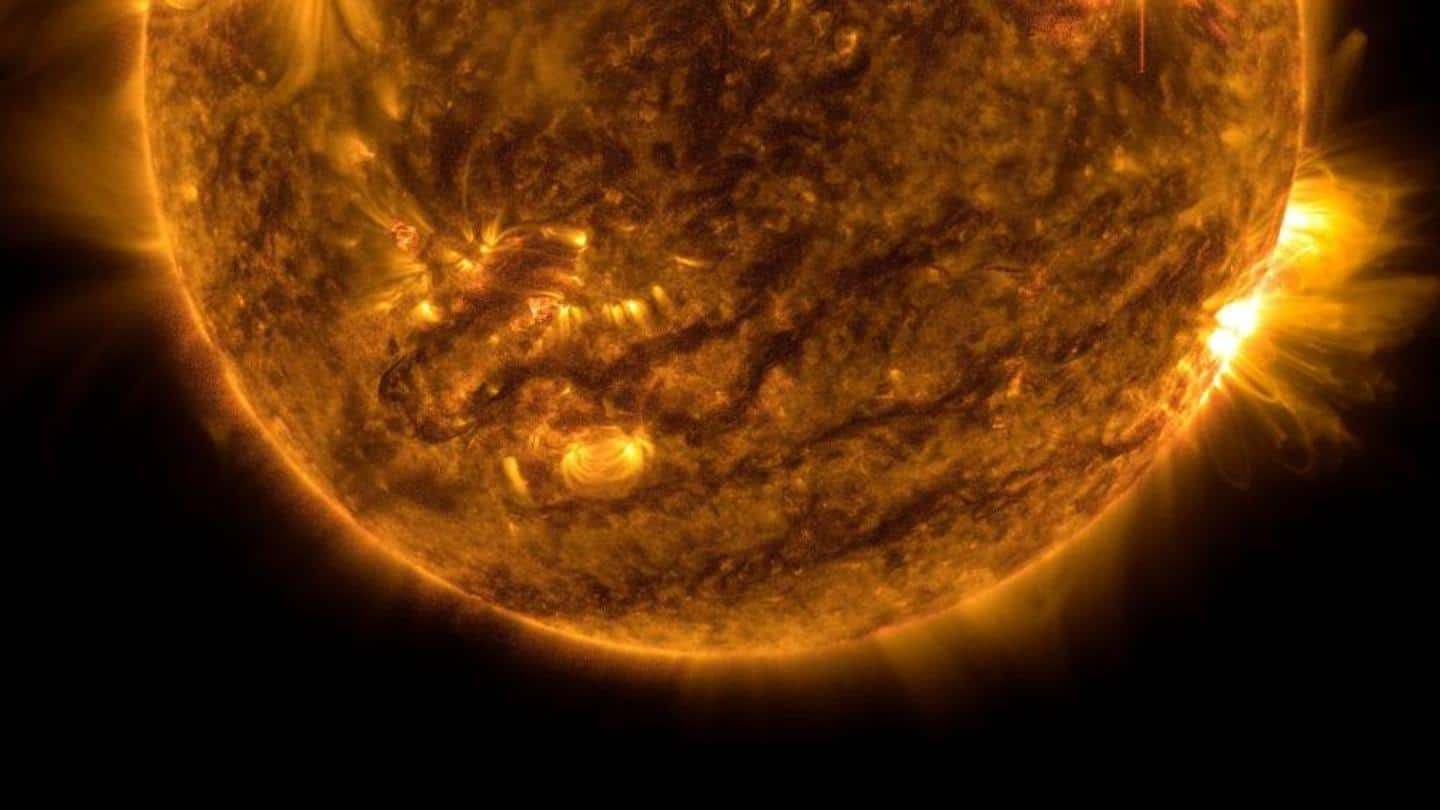
Massive sunspot observed; Earth could face dangerous X-class solar flares
What's the story
Sunspots are here to create chaos yet again. Just a couple of days ago, solar flares from the AR3110 sunspot caused distortions in the communication systems and stalled rescue operations in hurricane-hit regions of the US.
Now, one of the largest sunspots of this year has been identified. AR3112 has the potential of spewing X-class solar flares which can cause massive radio blackouts.
Context
Why does this story matter?
What makes AR3112 extremely dangerous is that it has the potential to set off strong X-class solar flares.
These flares are extremely intense and can lead to massive radio blackouts and can hamper communication facilities across several parts of the globe.
The emergence of the sunspot is already likely to bring about high solar activity over the next two weeks.
Details
What are sunspots?
Sunspots are black-colored regions on the surface of the Sun developed over locations with extremely powerful magnetic fields. They are colder than the other areas and emit powerful bursts of radiation.
As a matter of fact, the magnetic fields are so strong that they even prevent the heat from touching its surface, giving the sunspot a black-colored appearance.
Definition
What do we understand by a solar flare?
According to NASA, solar flares are enormous explosions on the Sun that send out pockets of energy, light, and high energy particles into space.
They are broadly classified as A, B, C, M and X. Each class is further sub-divided from 1-9. There is a 10-fold increase in energy across the classes.
A-class flares are the weakest while X-class ranks as the most intense.
Sunspot
AR3112 is one of the biggest sunspots
The AR3112 spot has been identified on the northeastern portion of the Sun via the DSCOVR satellite. The sunspot has several dark cores distributed across 1,30,000 km of the Sun's surface.
The coinciding positive and negative magnetic polarities on this sunspot could spark highly intense X-class solar flares.
However, one can safely visualise this sunspot via a telescope with a solar filter.
Information
Solar flares cause auroras
On the positive side, the interaction between Earth's electromagnetic field and the solar flares produces a bright night-sky phenomenon known as aurora or Northern Lights. However, this spectacle is most prominent at the polar regions.